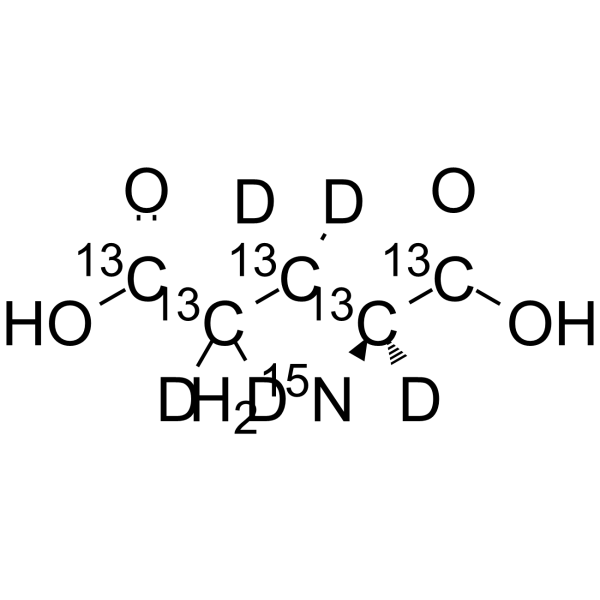L-Glutamic acid-13C5,d5,15N
Modify Date: 2024-01-05 10:40:24

L-Glutamic acid-13C5,d5,15N structure
|
Common Name | L-Glutamic acid-13C5,d5,15N | ||
|---|---|---|---|---|
| CAS Number | 1420815-74-2 | Molecular Weight | 158.12 | |
| Density | N/A | Boiling Point | N/A | |
| Molecular Formula | 13C5H4D515NO4 | Melting Point | N/A | |
| MSDS | N/A | Flash Point | N/A | |
Use of L-Glutamic acid-13C5,d5,15NL-Glutamic acid-13C5,d5,15N is the deuterium, 13C-, and 15-labeled L-Glutamic acid. L-Glutamic acid acts as an excitatory transmitter and an agonist at all subtypes of glutamate receptors (metabotropic, kainate, NMDA, and AMPA). L-Glutamic acid shows a direct activating effect on the release of DA from dopaminergic terminals. |
| Name | L-Glutamic acid-13C5,d5,15N |
|---|
| Description | L-Glutamic acid-13C5,d5,15N is the deuterium, 13C-, and 15-labeled L-Glutamic acid. L-Glutamic acid acts as an excitatory transmitter and an agonist at all subtypes of glutamate receptors (metabotropic, kainate, NMDA, and AMPA). L-Glutamic acid shows a direct activating effect on the release of DA from dopaminergic terminals. |
|---|---|
| Related Catalog | |
| In Vitro | Stable heavy isotopes of hydrogen, carbon, and other elements have been incorporated into drug molecules, largely as tracers for quantitation during the drug development process. Deuteration has gained attention because of its potential to affect the pharmacokinetic and metabolic profiles of drugs[1]. |
| References |
| Molecular Formula | 13C5H4D515NO4 |
|---|---|
| Molecular Weight | 158.12 |